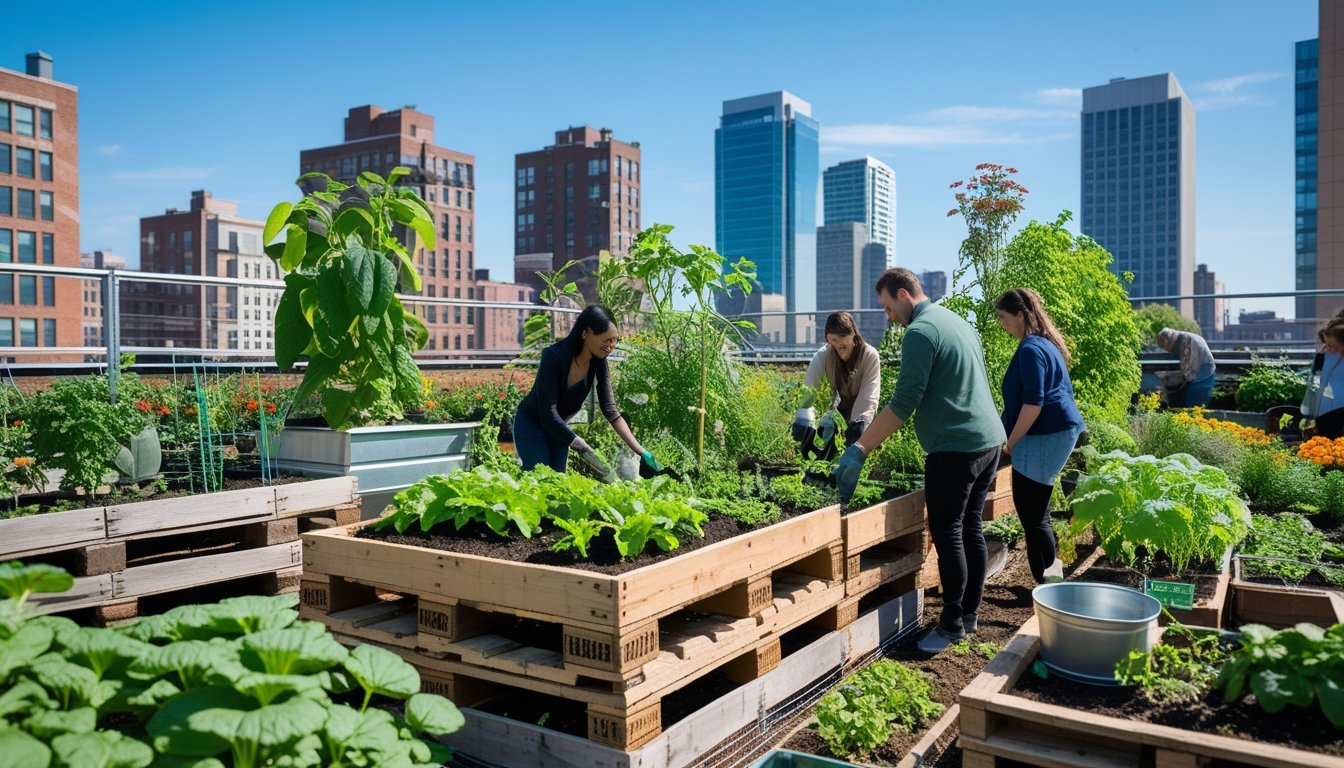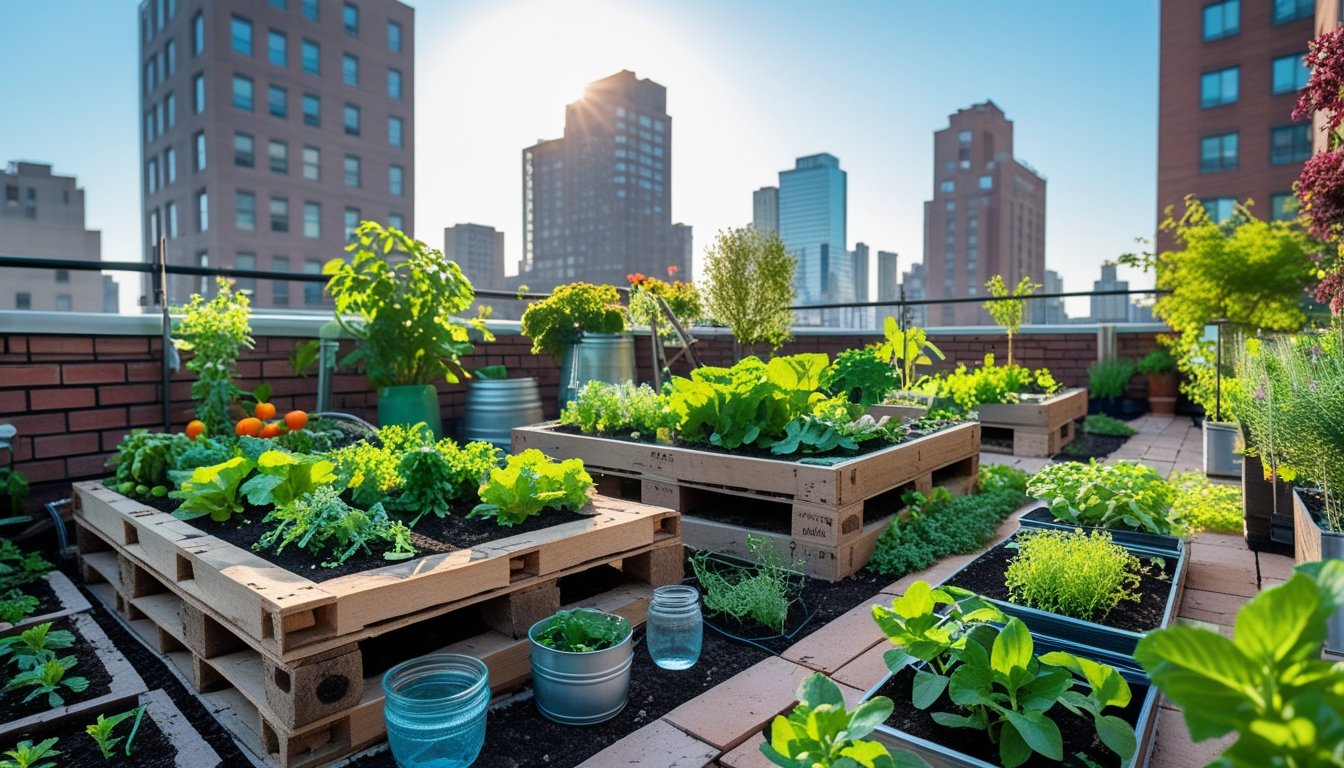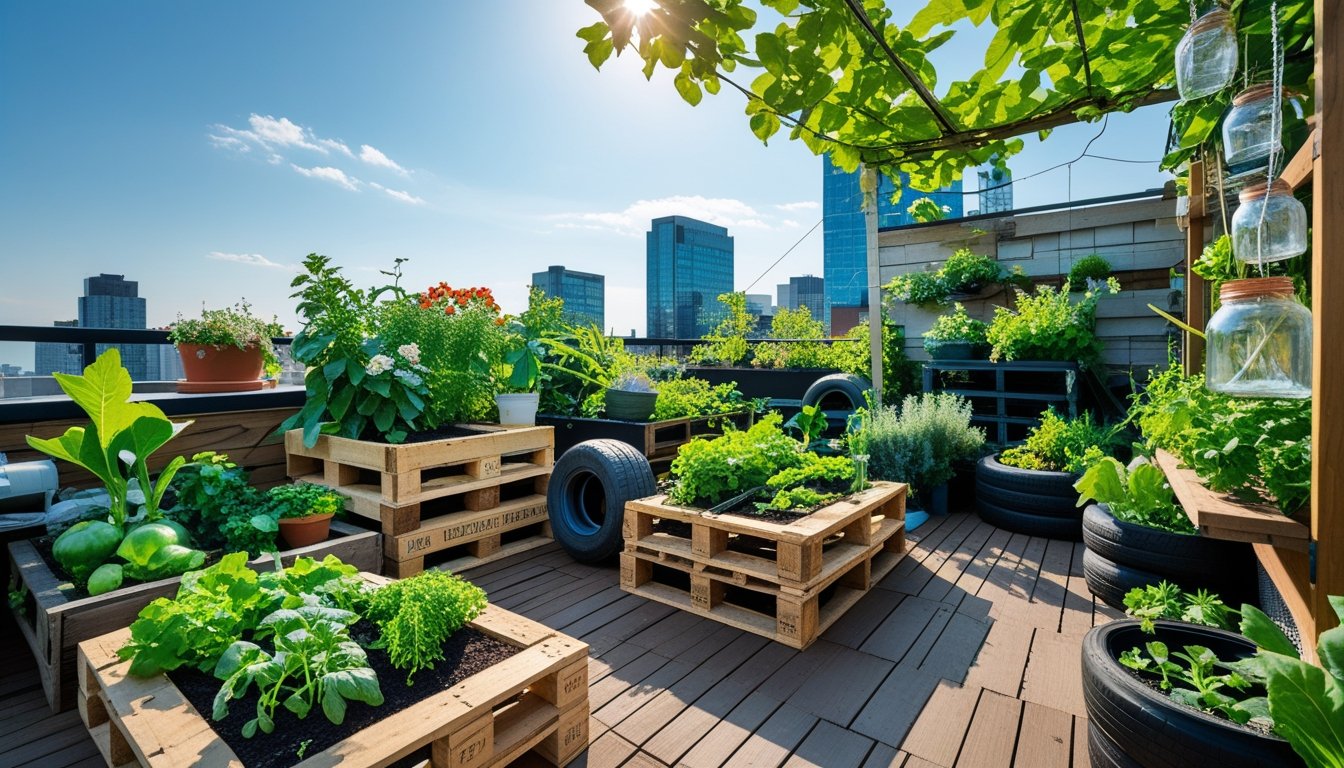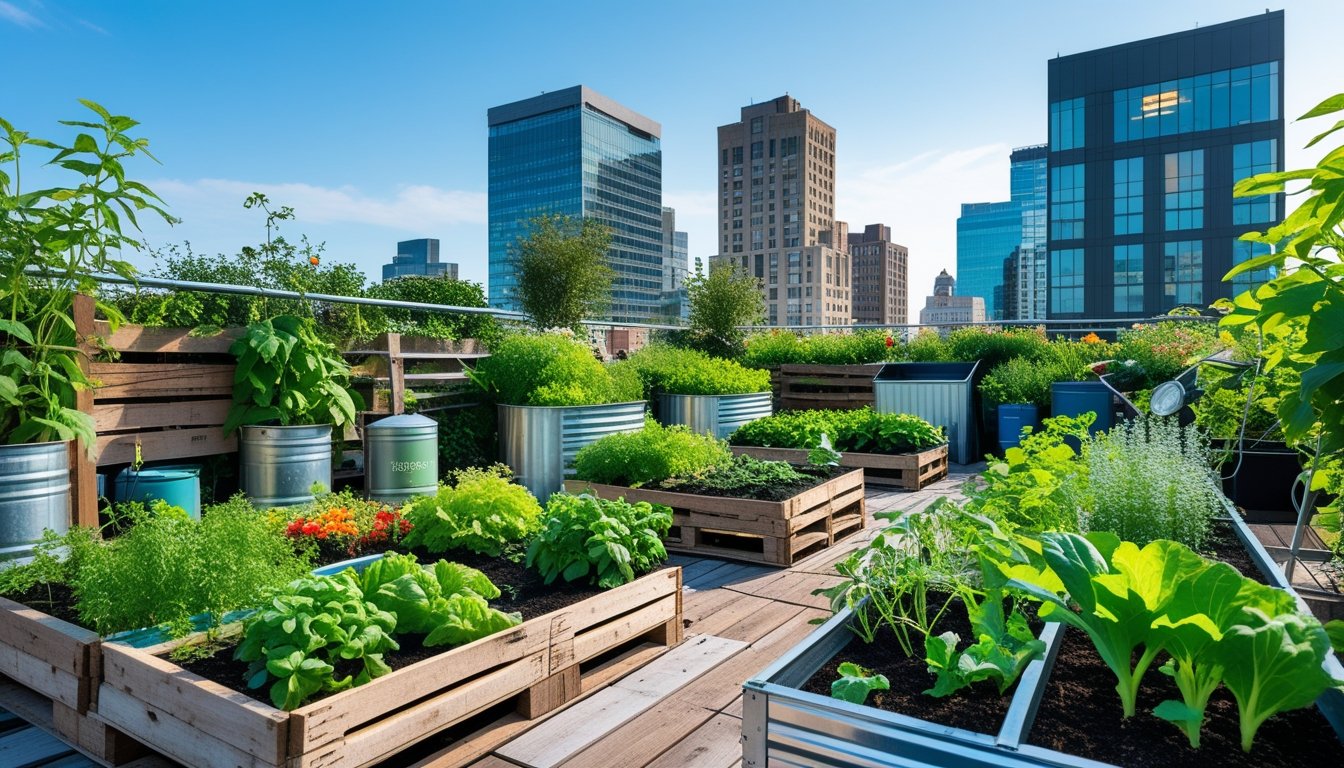Late updated: 25 Jul 2025 11:07
Written by: Emily Thornton
Enhancing Urban Gardens With Reclaimed Materials: Sustainable Transformation Techniques
Urban gardens represent a vibrant mix of life and innovation, turning barren city corners into thriving green spaces. By using reclaimed materials, we can bring an added layer of sustainability and creativity to these urban oases. This not only conserves resources but also inspires innovative design possibilities.

Imagine transforming old furniture, discarded containers, and other overlooked items into vibrant garden features. Using reclaimed materials in urban gardens allows us to merge sustainability with creativity, offering aesthetic beauty and environmental benefits. We can foster an eco-friendly approach while cultivating our little patches of greenery amidst the urban landscape.
As we delve deeper, we'll explore strategies and creative ideas that showcase how urban gardens can flourish using reclaimed resources. It's about reimagining waste as potential and finding innovative projects that breathe new life into both our gardens and our cityscapes.
Key Takeaways
- Reclaimed materials enhance garden aesthetics and sustainability.
- Innovative projects transform waste into garden treasures.
- Eco-friendly gardening blends creativity with conservation.
Core Strategies for Enhancing Urban Gardens with Reclaimed Materials

In urban gardening, using reclaimed materials can add layers of creativity and sustainability. Our focus includes selecting appropriate materials, understanding the benefits, and implementing space-efficient strategies.
Selecting the Right Reclaimed Materials for Urban Spaces
Choosing the right materials for urban gardens involves evaluating factors such as durability, aesthetics, and environmental impact. Reclaimed wood is an excellent option for building planters and benches, offering a rustic appeal. Similarly, repurposed containers and pallets can be transformed into unique planting beds or storage spaces. It's crucial to ensure these materials are safe and free from harmful chemicals. By prioritising local and accessible materials, we reduce transportation emissions, further enhancing our garden’s sustainability.
Benefits of Using Recycled and Upcycled Materials
Incorporating recycled and upcycled materials in our gardens supports a circular economy by reducing waste and conserving resources. This approach minimises our environmental footprint and often results in cost savings. Such materials provide unique design possibilities, allowing us to create eco-friendly garden structures like trellises or pathways creatively. Using recycled items aligns with a sustainable gardening ethos, transforming discarded objects into valuable garden assets, making our green spaces not only functional but also environmentally responsible.
Innovative Approaches for Small Spaces and Vertical Gardens
Urban areas often offer limited gardening space; however, we can use vertical gardening and small-space designs to overcome this. Vertical gardens can be constructed using old ladders, shelving units, or pipes to create lush green walls. Hanging pots or tiered planters maximises soil space and sunlight exposure. In small community gardens, shared reclaimed projects like raised beds from salvaged timber or communal compost bins from old crates foster community spirit while making efficient use of available space, showcasing a commitment to sustainable development practices.
Creative Applications and Project Ideas Using Reclaimed Materials

Urban gardening benefits significantly from using reclaimed materials to create sustainable, cost-effective solutions. With innovative approaches, everyday objects can become part of a thriving garden space that's both functional and aesthetically pleasing.
DIY Containers and Planters from Household Items
Creating planters from household items is a fantastic way to integrate sustainability into urban gardening. Old containers like tin cans, egg cartons, and glass jars can be repurposed into charming plant holders. Plastic bottles cut in half make excellent containers for small herbs and flowers.
For larger plants, recycled barrels or even old tyres can serve as robust planters. By utilising these items, we reduce waste and add a unique touch to our green spaces. It's a simple but effective way to contribute to environmental conservation.
Constructing Raised Beds, Trellises, and Garden Structures
Scrap wood and wooden pallets are ideal for constructing raised beds and trellises. These materials provide stability and can be sourced from local recycling centres. With a few basic tools and creativity, we can transform these materials into garden structures that optimise space.
Old furniture, such as bed frames or ladders, can be repurposed as trellises, supporting tomato plants or climbers like peas and beans. These structures not only maximise vertical space but also enhance biodiversity by encouraging diverse plant growth.
Garden Art, Décor, and Bird Feeders from Discarded Objects
Creating art and décor from discarded objects adds personality to any urban garden. Old containers, recycled plastic bottles, and tin cans can become decorative art pieces or practical elements like bird feeders.
Old metal items like rakes or shovels can be repurposed into unique garden art. These decorative elements help create an inviting and vibrant atmosphere, fostering a sense of community and belonging in urban spaces. Simple touches like this can significantly enhance the look and feel of the garden.
Composting, Rainwater Harvesting, and Sustainable Practices
Composting is a key practice in sustainable urban gardening. By using kitchen scraps and yard waste, we create nutrient-rich compost that enhances soil health. Old barrels and large containers work well as compost bins, providing an efficient method for recycling organic waste.
Rainwater harvesting is another essential practice. Redirecting rainwater from roofs into recycled containers helps conserve water and supports garden irrigation needs. Combining these practices encourages companion planting and fosters an eco-friendly urban environment that supports native plants and biodiversity.
Frequently Asked Questions

Urban gardening with reclaimed materials is an eco-friendly practice enhancing green spaces. It encourages sustainability by using what might otherwise go to waste, fostering a connection to nature and creativity.
What are the safest types of reclaimed materials to use in urban gardens?
Safety is key when selecting reclaimed materials. Metal, glass, and certain plastics can be excellent for garden use. Old shipping pallets are often repurposed but must be checked for harmful chemicals. Always ensure that materials are non-toxic and suitable for planting.
How can one ensure the sustainability of upcycled resources for garden projects?
Sustainability can be ensured by sourcing materials locally, reducing transportation emissions. Regularly inspect materials for durability. By documenting sources, we can foster a circulation of information, creating a sustainable network of resources for urban gardens.
What innovations in design are available for incorporating recycled elements in garden spaces?
Creative design ideas are always evolving. Vertical gardens made from old ladders or shelves maximise limited space. Transform old bathtubs into planter beds or use tyres as raised beds. The fusion of aesthetic appeal with functionality encourages diverse approaches.
Could you suggest effective methods for treating reclaimed wood for use in garden structures?
Reclaimed wood requires proper treatment. Begin by cleaning and sanding the wood to remove dirt and splinters. Use non-toxic sealants or finishes to protect from moisture and pests. This extends the wood’s life while maintaining safety for plants and garden users.
What are the legal considerations when salvaging materials for urban garden use?
Always check the legality before salvaging materials. Some areas may have restrictions on what can be reused for safety or environmental reasons. Obtain permission if taking materials from private or restricted properties to ensure compliance with local regulations.
How does the use of reclaimed materials contribute to urban biodiversity?
Reclaimed materials help in creating diverse habitats. They offer unique structures for plants and organisms, promoting interaction between various species. This integration enhances the resilience and biodiversity of urban ecosystems, providing pockets of nature in city landscapes.
